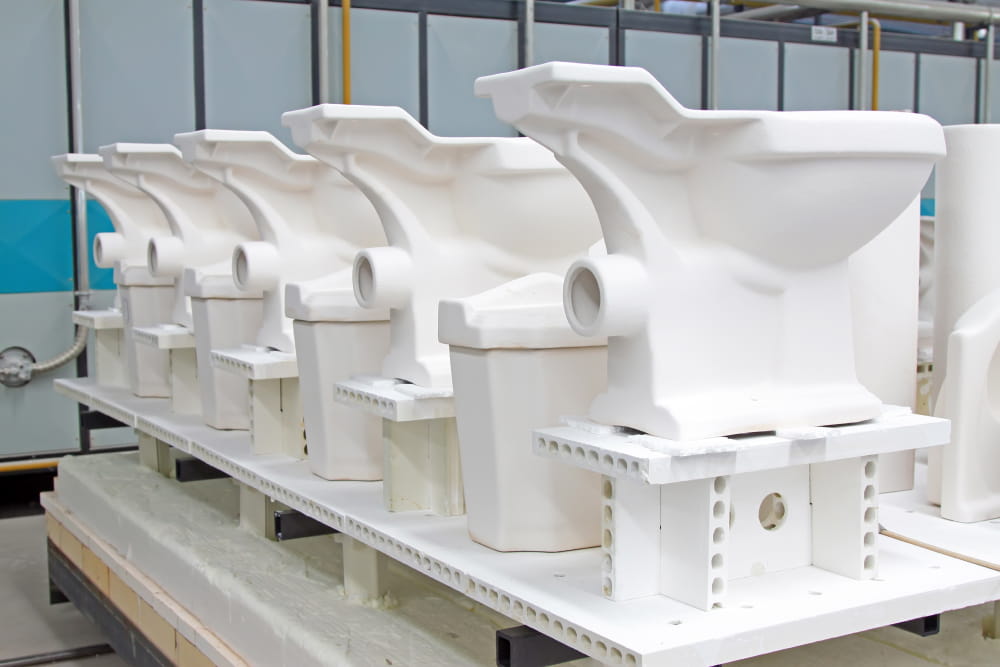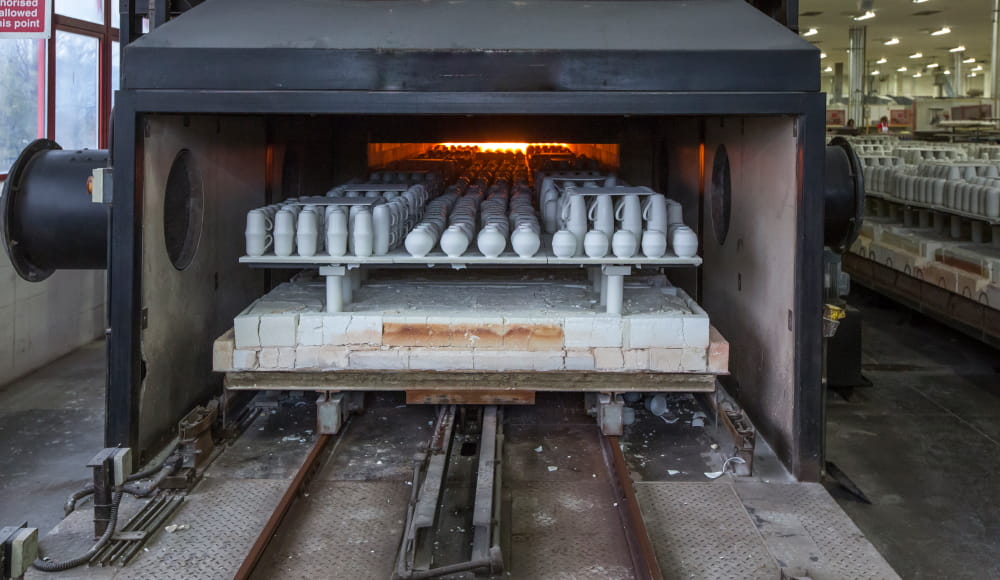Get A Free Legal Consultation
- We fight to maximize your results
- Many clients get results in as few as 90 days
- No out-of-pocket costs for you or your family






Ceramic manufacturing puts workers at risk of asbestos exposure in multiple ways. First, the ceramic industry relies heavily on talc, which could be contaminated by asbestos.
Additionally, people who work around asbestos insulation, kilns and other heating equipment are also put at risk. Any of these potentially dangerous scenarios can lead to deadly asbestos-related diseases, such as mesothelioma.
Get a free legal consultation today to learn more about how Simmons Hanly Conroy can help your family.
Many people wouldn’t suspect ceramic manufacturing to put workers at risk for asbestos-related diseases like mesothelioma, an aggressive cancer caused by asbestos exposure. However, asbestos exposure is common in this industry.
The ceramic manufacturing industry includes companies that make:
Ceramic manufacturing workers are frequently exposed to asbestos insulation, kilns and other heating equipment. This equipment often has asbestos-containing components that maintenance workers could be exposed to.
Additionally, asbestos-contaminated talc is used as an ingredient in ceramic fixtures. Talc is also used in a range of ceramic-making processes.
Finally, ceramic manufacturing facilities often had talc rooms and bins full of talc used for the various work being done. Not only did this put people working in these rooms at risk, but it could also cause secondary exposure to workers in the surrounding area.


Talc is a mineral made of magnesium, silicon, oxygen and hydrogen. It occurs naturally and is not believed to be innately harmful. However, talc is found in the earth close to where asbestos is located and can often be contaminated with asbestos fibers.
Unlike talc, asbestos is a naturally occurring mineral known to cause mesothelioma and other asbestos-related diseases.
Talc is widely used in ceramics as a glaze, body ingredient and mold release agent. In the ceramic manufacturing industry, workers could be at risk of asbestos exposure if the talc they worked with was mined near asbestos. However, this is something the ceramic manufacturing company is responsible for determining.
Asbestos-containing ceramic products include:
Ceramics is a general term used to describe products ranging from clay to whitewares, such as bathroom fixtures.
Because of the wide range of processes involved, there are many roles in the ceramic manufacturing industry that may be at risk of asbestos exposure.
At-risk ceramic manufacturing occupations include:
In addition to ceramic manufacturing workers being at risk for asbestos exposure, their family members could also be at risk for secondhand exposure.
Secondhand asbestos exposure can occur when workers unknowingly bring asbestos fibers home on their clothes or hair. If these fibers become airborne, they can be inhaled by anyone nearby.
As of 2021, ceramic manufacturing is a $3 billion industry that employs over 14,000 people. While there are almost 2,000 ceramic manufacturing companies, there are only a handful of leaders in the industry.
Some of the largest ceramic manufacturing companies include:
If you were diagnosed with mesothelioma after working at a ceramic manufacturing company, contact Simmons Hanly Conroy today to learn more about your options. There’s no cost to speak with our team.
Simmons Hanly Conroy has proven experience securing results for ceramic workers and their families. Our team secured a notable jury verdict for the family of a man who worked at Crane Plumbing Fixtures Factory.
While employed at the factory, our client Michael used talc powder contaminated with asbestos fibers to dust large molds of sinks, bathtubs and other ceramic fixtures.
After almost 40 years of work, Michael was tragically diagnosed with pleural mesothelioma in 2010. He died only six months later, at the age of 62.
“Like many Americans, he worked hard his entire life so he could enjoy retirement with his grandchildren. Instead, it caused him to be exposed to asbestos and develop a deadly cancer.”
– Partner Randy Cohn
In this case, our team established that the asbestos fibers came from a mine in Gouverneur, New York, owned and operated by RT Vanderbilt Company, Inc.
Because Simmons Hanly Conroy was able to successfully connect his disease to a specific point of exposure, a Delaware jury awarded his family with a $2.86 million verdict. This result was the largest asbestos verdict against a single defendant in Delaware in over a decade.


If you or a loved one worked in ceramic manufacturing and believe you were exposed to asbestos or contaminated talc, we may be able to help.
Simmons Hanly Conroy is a leading national asbestos law firm founded to help people affected by mesothelioma and asbestos-related illnesses.
We have the experience and resources needed to hold ceramic manufacturers accountable:
We use our experience, resources and commitment to handle every step of the legal process for your case — at no out-of-pocket cost to you or your family.
Get a free and confidential case review or call (800) 326-8900 today to learn more about how we can help.